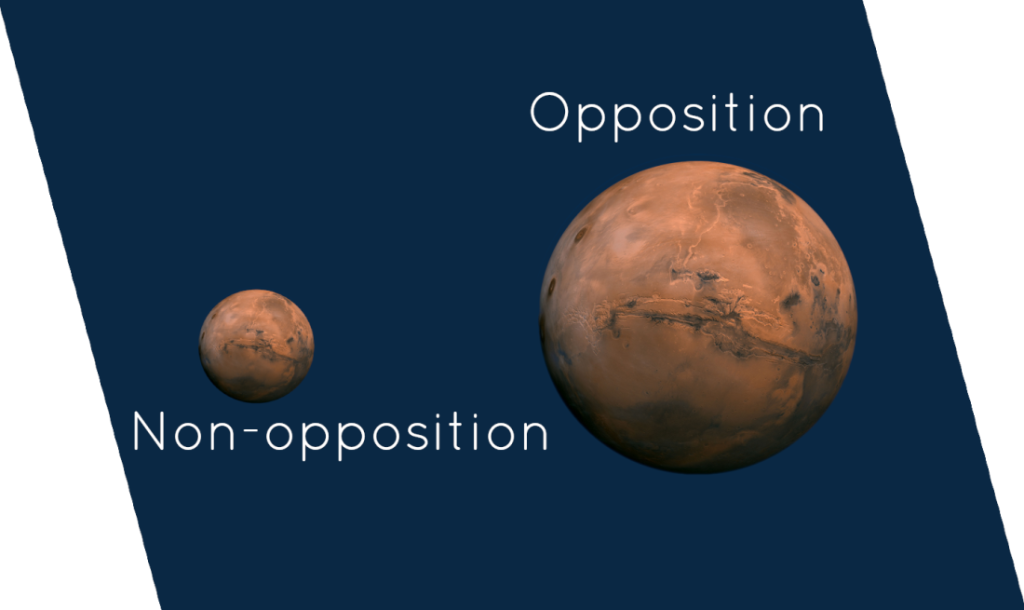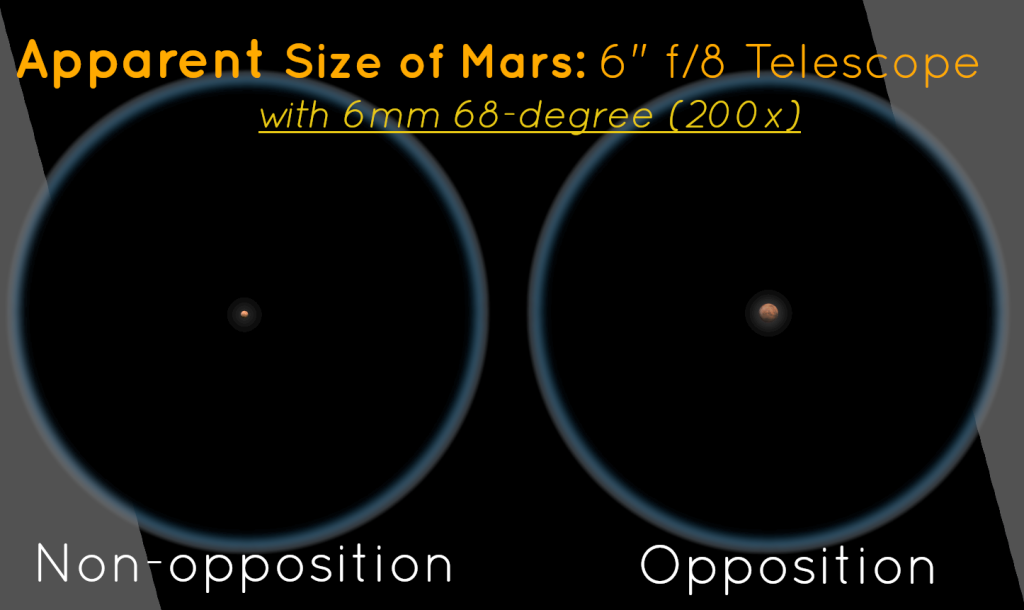Observing Mars with a telescope can be a rewarding experience, as it offers visible features such as clouds, canyons, dust storms, and ice caps. Mars’ orbit and seasonal variations make its apparent size in the sky fluctuate, with the best viewing occurring during its opposition every two years. Timing, weather conditions, and telescope selection are key factors to consider when observing Mars. It is important to choose clear nights with minimal atmospheric turbulence for optimal viewing. Reflectors and medium cassegrains are recommended for beginners, while advanced users may prefer larger scopes. Allowing the telescope to acclimate to the temperature, observing during moments of steady seeing, and documenting observations through sketches and notes are additional tips for a more enriching Mars observation experience.
Observing Mars with a Telescope
Observing Mars presents unique challenges compared to the other planets, but it is rewarding, with easily seen features including clouds, canyons, dust storms, and (if the season on Mars is cool) even ice caps. Speaking of seasons: Mars, more than any other planet we observe, comes and goes with the seasons. Its orbit, which is just outside of ours, brings huge swings in its apparent size. For about 3 months, Mars is nearly ten times as large in the sky as it is during the rest of a roughly 2-year interaction cycle.
We consider the opposition to be when Mars will be closest to our orbit. For about 90 days, it is very large when seen in a telescope—20 or more arc seconds. Do note that the moon is 1900 arc seconds; relatively speaking, Mars is still quite small even during opposition.

Recent and Upcoming Mars Oppositions
| Date | Time (UTC) | Earth-Mars Distance | |
| miles | km | ||
| Dec. 8, 2022 | 04:30:50 | 51,078,912 | 82,203,540 |
| Jan. 16, 2025 | 01:54:33 | 59,831,144 | 96,288,893 |
| Feb. 19, 2027 | 16:02:32 | 63,017,730 | 101,417,205 |
| March 25, 2029 | 08:38:31 | 60,337,253 | 97,103,396 |
Key Factors in Observing Mars With a Telescope:
- Timing:
Observing Mars during its opposition is crucial for optimal viewing. This occurs approximately every two years when Mars is closest to Earth in its orbit. During opposition, Mars appears larger and brighter in the night sky, providing the best opportunity for detailed observation. Keep track of the opposition dates and plan your observing sessions accordingly.
- Weather and atmospheric conditions:
The quality of the atmosphere greatly impacts your Mars observations. Choose a night with clear skies and good atmospheric conditions. While this is not as true for “deep sky” observing, for planets (especially Mars and Jupiter, with such fine details within reach), stable air with minimal turbulence is essential for obtaining sharp and detailed views. Keep an eye on weather forecasts and select a night with favorable conditions for the best viewing experience. To assess the atmospheric stability,” look for how much the stars above shimmer. If they don’t visibly shimmer or twinkle,” that means it’s a great night for planets!
What Telescope Should I Use?
Mars is very red; achromats such as the PowerSeeker 70AZ, 80AZ, and others will not deliver a good true color view. Reflectors and medium cassegrains are the best telescopes for beginners to observe with, and advanced users will appreciate the views from a very large scope under calm skies.
A balance point must be struck with the aperture—too large, and nights of perfect seeing will be too rare. But reflectors between 114mm and 200mm provide a good balance, as does any Schmidt-Cassegrain or Maksutov in that range. These have sufficient resolution and useful magnification to spot albedo features (see below!)
Advanced users will enjoy using very large reflectors and cassegrains if seeing supports it, and anyone observing near the polar jet streams will want to use techniques such as apodizing masks or stop-down masks to beat the turbulent skies. And if you happen to have a very premium refractor, you should already know to expect good planets. While 200x is a good place to start (and telescopes 114mm and smaller should not try exceeding it), if the “seeing” supports it, users with experience will enjoy higher powers in the 300-400x range. The best way to reach such high powers is with a good small eyepiece with good edge correction. Plossls are uncomfortable, but UWA’s and other 82-degree eyepieces are a great choice; inexpensive options include the SVBony redline/goldlines in the 6mm range and the various copies of the 6mm “Planetary” from TMB.

Will Mars Through Telescope Look Like a NASA Photo?
Mars, sadly, will not look as photographic as Jupiter and Saturn, the other most interesting planets to observe. It is a fairly low-contrast body compared to the dramatic rings of Saturn and the swirling clouds and frequent transits of Jupiter. Detail needs to be eked out on very good nights and ideally cross-referenced with an albedo/surface map. You can see a visualization below of how big it gets at reasonable magnifications:

Atmosphere and telescopic resolution limit the size of the finest details we can see on Mars; imagine a blurring of neighboring points of detail into bright and dark smears, called “albedo” features. This includes mountains, polar caps, and canyons, among other details. Study the map above and compare it with photographs. Many of these are simply darker terrain, but some features correspond to interesting topographic details.
Extra Tips for Telescope Observation of Mars
- Acclimation: Allowing your telescope to acclimate to the ambient temperature is crucial for optimal performance. Temperature differences between the telescope and the surrounding environment can cause thermal currents and distortions in the images via two mechanisms. First, the optics have uneven thickness; cooling or warming unevenly will cause the figure to change until it evens out, worsening the image directly. Secondly, if the optics are warmer than the ambient temperature, turbulent air will pool in the telescope tube. Make sure to set up your telescope well in advance and let it cool down to the outside temperature before observing Mars.
- Filters: Utilizing color filters can enhance the visibility of Mars’ surface features. A red filter, for example, can help bring out details in the polar caps, while a blue filter can enhance the visibility of dark surface features. Experiment with different filters to see which ones enhance the desired features and provide the best contrast.
- Observing techniques: Give the planet a good, long stare. Waiting for moments of good “seeing” can help. The Earth’s atmosphere can introduce turbulence that affects the clarity of planetary observations. Wait for moments of steady seeing when the atmosphere is calmer. Look for periods when the planet appears sharper and more stable. This can significantly improve the level of detail you can see.
- Mars’ surface features can be challenging to observe due to its relatively small size and atmospheric conditions. Dust storms on Mars can obscure surface detail, and much like Jupiter, it has a day length on a similar scale to our own, meaning it varies slowly from night to night. Spend time observing, allowing your eyes and telescope to adapt, and be patient for moments of steady atmospheric conditions that reveal clearer views
- Sketching and note-taking: Sketching is a proven way to hone your focus and discernment abilities as an observer. By sitting at the eyepiece for an extended period and working on a sketch, one notices and ekes out fainter details, something Mars has in droves. Many of the best planetary observers are prolific sketchers, and sketches provide much more truthful and honest depictions of the “at-the-eyepiece” view than any photo. Photos tend to either vastly undersell (if via cell phone) or overrepresent (if via planetcam) the view, but a sketch is a good way to convey/remember what was actually seen. Documenting your observations through sketches and notes is a valuable practice. As you observe Mars, sketch the visible features to capture their appearance accurately. Note down the date, time, and specific details you observe. This will enable you to track changes over time and compare your observations during subsequent sessions, thereby adding another dimension to your observations!
